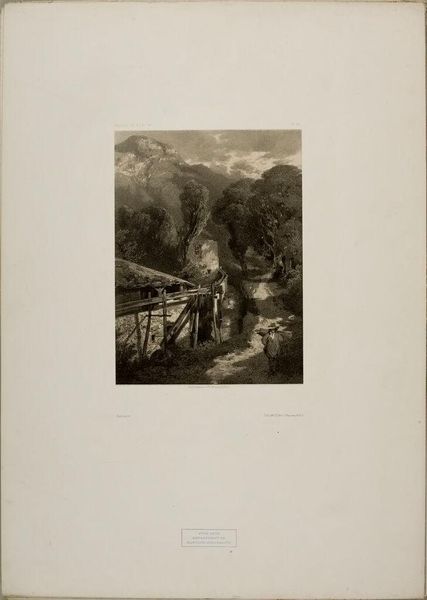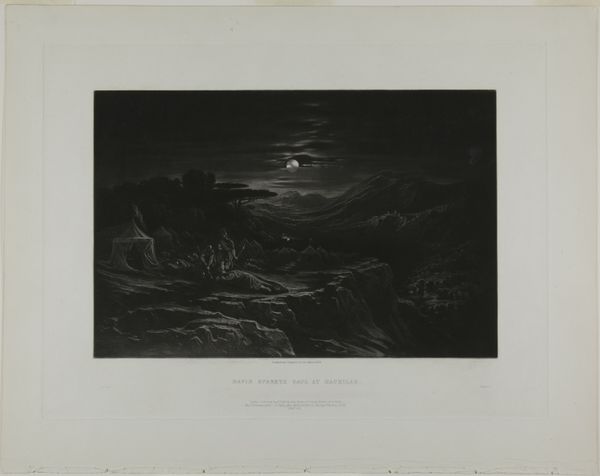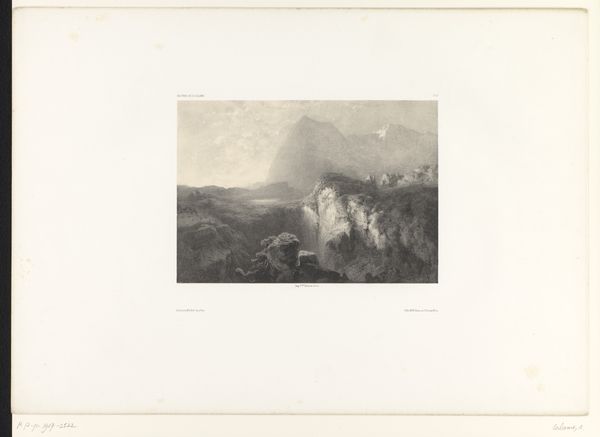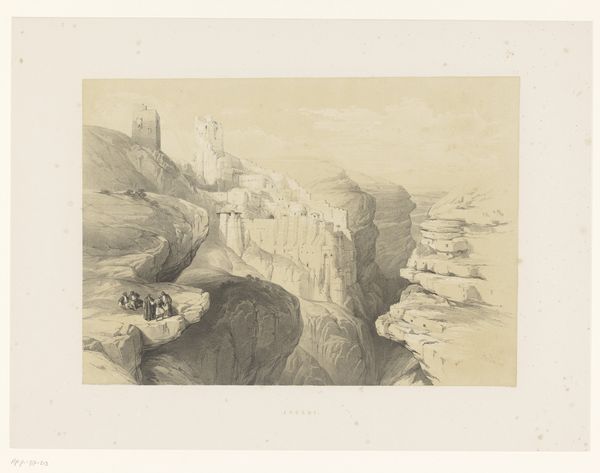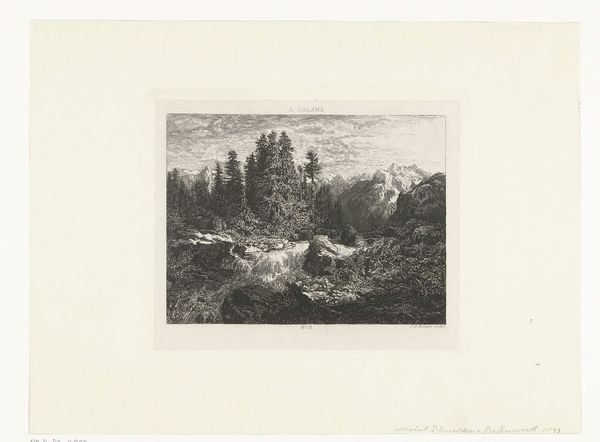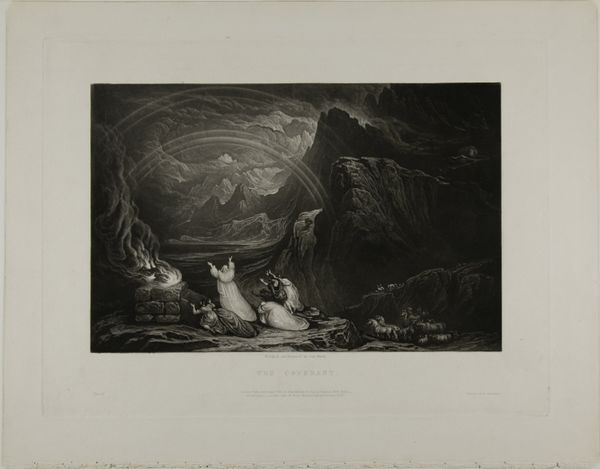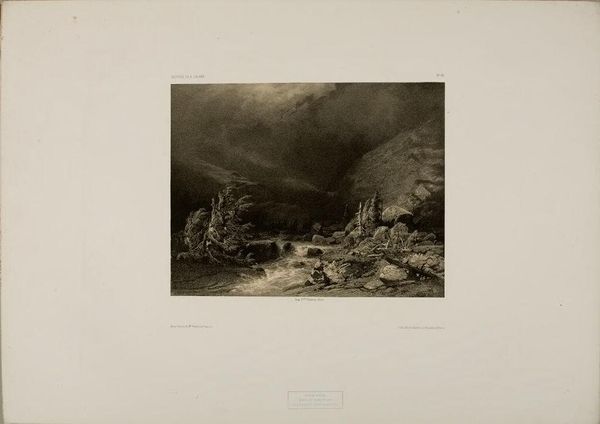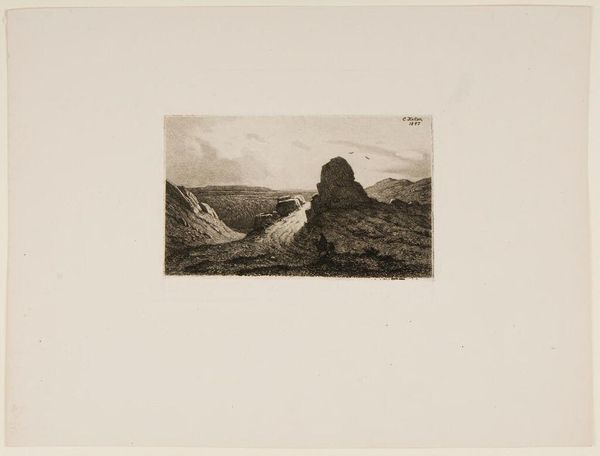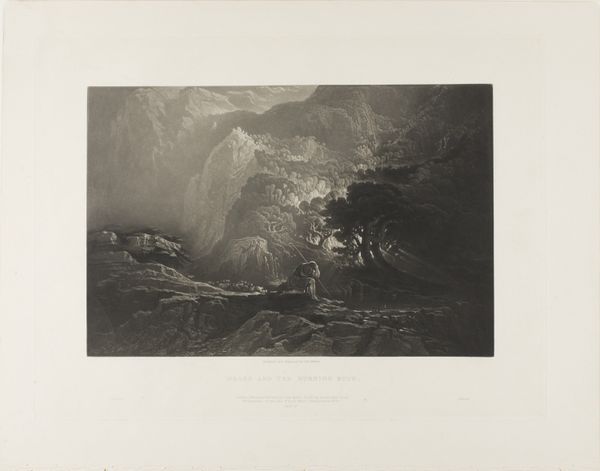
The Destruction of Sodom and Gomorrah, from Illustrations of the Bible 1832
0:00
0:00
drawing, print, paper, engraving
#
drawing
# print
#
landscape
#
charcoal drawing
#
paper
#
romanticism
#
cityscape
#
history-painting
#
engraving
Dimensions: 190 × 290 mm (image); 268 × 357 mm (plate); 329 × 416 mm (sheet)
Copyright: Public Domain
Editor: Here we have John Martin’s “The Destruction of Sodom and Gomorrah” from 1832. It's an engraving printed on paper, and it depicts a really dramatic scene of fire raining down upon a city. What strikes me is how the figures seem so small against this overwhelming display of divine power. How do you interpret this work? Curator: Martin's work resonates deeply within its historical context. How do we see the artist grapple with anxieties surrounding industrialization, urbanization, and the societal inequalities of 19th-century Britain through this biblical narrative? It isn't just about divine wrath. Editor: So, it's like he's using this Old Testament story to comment on contemporary issues? Curator: Precisely! Think about the Industrial Revolution, the shift in populations towards urban centers, and the exploitation of labor. Sodom and Gomorrah, in this light, become metaphors for the perceived moral decay of rapidly changing societies. Can we consider the environmental aspect too? Think of how climate change disproportionately affects marginalized communities, making them modern-day Sodoms and Gomorrahs. Editor: That’s a powerful analogy. The focus on collective punishment raises questions about fairness, doesn't it? I guess that even the idea of divine justice is questioned here. Curator: It challenges us to confront the social structures that condemn entire groups based on the actions of a few. The role of the artist here is one of calling the establishment to give an account for injustices that affect minorities. In many ways, this biblical scene echoes issues relevant to ongoing concerns of social justice and societal responsibility. What did you take from the experience of seeing it now? Editor: That's insightful. I realize now that looking at the artwork through a critical and intersectional lens opens it up to so many contemporary interpretations about environmental issues and moral accountabilty!
Comments
No comments
Be the first to comment and join the conversation on the ultimate creative platform.
